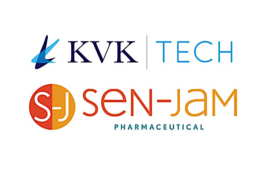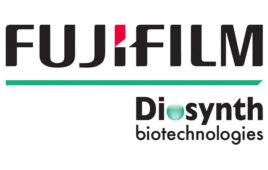
By Brian Wilson, National Product Manager PIAB
Vacuum conveying technology has become an indispensable part of the pharmaceutical manufacturing process. It is being used for an increasingly wider array of tasks: moving materials through the drug processing line, blending ingredients in various solutions, even tablet handling.The growing reliance on vacuum conveying is not hard to understand, once you consider its myriad advantages. It is enclosed, hygienic and safe, which is recommended when transferring ingredients and finished products in pharmaceutical processing applications. Powders and granules are ideal for vacuum conveying as well as a number of other materials. Even those materials that are health impairing and/or sensitive to humidity and contamination, can be safely conveyed – without powder leakage into the environment.
Choosing the best vacuum conveyor for your pharmaceutical manufacturing environment is a challenging task that requires careful consideration. If a system is chosen without the necessary forethought, it may result in serious repercussions, such as loss of productivity, employee hazards, downtime, etc. There are a variety of specific features and benefits to look for when selecting a vacuum conveying system. An ideal system will optimize performance, and increase overall productivity. Look for vacuum conveying systems that offer the following qualities.
Modularity. Rather than opting for a conveyor with unibody construction – which means that it can only be used for one application – it is a good idea to opt for a conveyor that can be customized, allowing users to mix and match various attachments to fit their needs.
Flexibility. The ideal vacuum conveyor should be capable of running different types of dry materials. Substances such as penicillin, lactose, and potassium, while all pharmaceutical powders, feature varying densities and flow characteristics. Ease of assembly/disassembly. The conveyor should be both simple to assemble and to disassemble for cleaning, sanitizing or inspecting.
Hygienic. This is an extremely critical consideration in the pharmaceutical industry, which deals with active ingredients that always present a danger for workers. Every part of the conveying system should be enclosed and safe, eliminating any possibility of cross-contamination, particularly during product changeovers.
USDA/3A/FDA/GMP approved. The conveyor should comply with health and safety requirements mandated in the processing of pharmaceutical products. To manufacture equipment according to these requirements is GMP-Good Manufacturing Practice. GMP is designed to minimize the risks involved in any pharmaceutical production that cannot be eliminated through testing the final product.
Lab testing. This vital step in the conveyor selection process is often overlooked. If you can find a manufacturer with this capability, the advantages are evident. Make sure the lab is able to test-run a variety of powders, granules or fluids, to assess conveying characteristics over various vertical and horizontal distances. You will also want the opportunity to view an analysis of volume conveyed per hour or minute over a given distance, as well as vacuum cycle time and energy consumption.
Filtration. Filters are an integral component to the vacuum conveyor, because they prevent dust and fine particles from being drawn into the vacuum pump and escaping into the surroundings. There are several filtration options to consider-the key is to pick a vendor that offers a variety of choices. Herding filters are ideal for all powder applications because they are made with absolutely no silicone, allowing for proper adhesion to surfaces during powder coating applications. These filters are recommended for powders with a particle size of .5 micron and greater. Some manufacturers offer conveyors that can be equipped with high efficiency particle arrestment (HEPA) filters, which filter 99.9% of all dust particles. This is a particularly useful option for companies processing drugs with a very low exposure level, with active ingredients that can be deadly if ingested by workers. Another option is the Gore Sinbran filter, which is also recommended for powders with a particle size of greater than 0.5 microns.
Vacuum vs. mechanical pumps. Using pneumatic vacuum pumps for conveying is superior to using mechanical pumps for a number of reasons. Pneumatic vacuum pumps offer energy efficiency, low maintenance, few moving parts, minimal product degradation, excellent material containment, and ease of system configuration. Consequently, the heat, noise and contamination issues associated with mechanical pumps are eliminated.
Fluidization. Fluidization allows for compressed air to pass through a porous material, creating a cushion that reduces the coefficient of friction allowing non free flowing material to discharge freely from the vacuum receiver. Fluidization is ideal for the conveying of non-free-flowing powders like penicillin, sugars, sorbitol, starches, lactose, and potassium.
Size/Shape. Ideally, conveyors offer a relatively small footprint, allowing manufacturers to maximize floor space for product production. The shape of various conveyor parts is also an important consideration, not just in terms of efficiency but also as it relates to safety issues. For instance, the conical shape of some conveyor modules makes them stiff and rigid, eliminating the risk of implosion.
Durable Material. Conveyors made of stainless steel AISI 316L are a requirement for most pharmaceutical applications. Make sure the conveyor’s material meets industry requirements and can cope with the most demanding circumstances.
Flow modulation. Users should be able to modulate flow characteristics through the conveyor line by increasing and decreasing the amount of air at the feed point or by increasing or decreasing the product velocity by adjusting the feed pressure at the vacuum pump. This changes the way material is conveyed and provides the operator with greater control.
IQ/OQ/PQ validation. A conveying system must meet the rigid guidelines of IQ/OQ/PQ/ validation, which allows manufacturers to comply with strict quality standards. FDA requires all pharmaceutical manufacturers to have their equipment IQ/OQ/PQ/ validated. IQ validation proves that a particular instrument was installed properly; OQ tests that the instrument meets specifications in the user environment; and PQ tests that the system performs the selected application correctly. This certification involves the measurement and verification of pressure, vacuum, and sound for each cycle using NIST traceable devices and the proper transfer of materials from feed station to final destination.
Access to accessories. Customers should look for a vendor that can provide a selection of accessories for the conveying system, such as feed wands, feed adapters and portable stands. Devices such as these can greatly optimize the conveyor’s performance.
Warranties. Like any industrial product, conveyors come with warranties that protect the user against costly repair during the warranty period. Still, some conveyor manufacturers offer longer warranty periods than others, even up to five years.Employee Safety. Having your employees manually “scoop” pharmaceutical ingredients can put them at risk of breathing toxic chemicals into their lungs. Additionally, lifting and handling of heavy sacks can result in serious back or shoulder strain. With the proper conveying system, a greater number of materials, even those that are health impairing and/or sensitive to humidity and contamination can be safely conveyed, reducing the risks of employee inhalation or physical injury.
Environmentally Friendly. With the increasing need for energy efficiency and low contamination, the government has been tightening regulations on emission control. Make sure your conveying equipment complies with the latest pharmaceutical industry standards; mechanical systems often pose a threat of oil or lubricant contamination.Clearly, a conveying system is not an “impulse” buy. It requires careful consideration of numerous criteria regarding performance, safety, ergonomics, and flexibility. But the time spent in this process will be an invaluable investment in the overall health of your pharmaceutical manufacturing operation.




